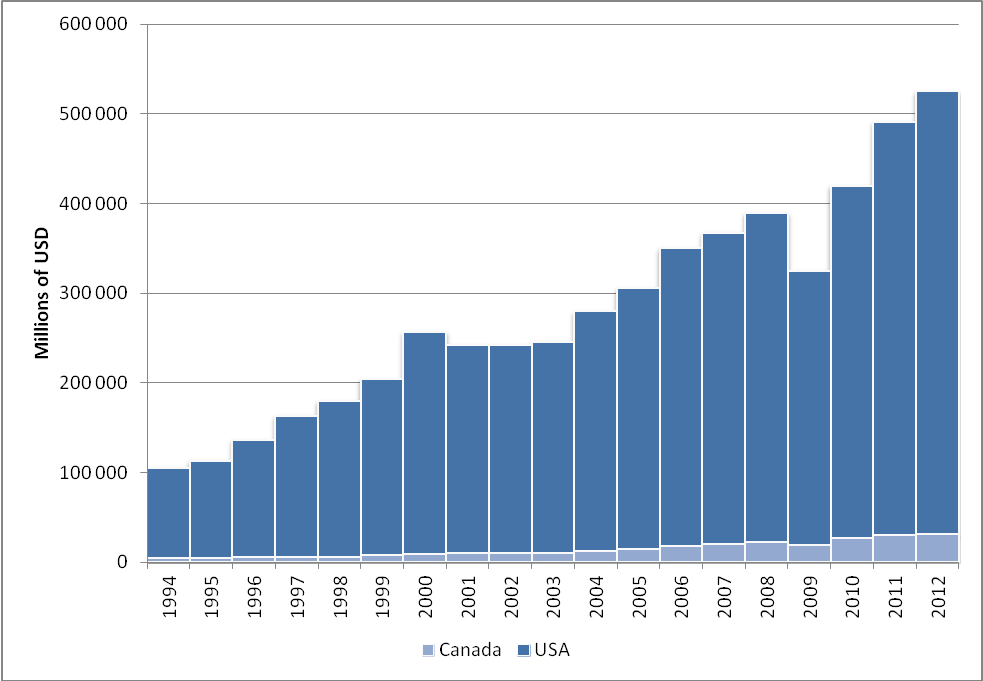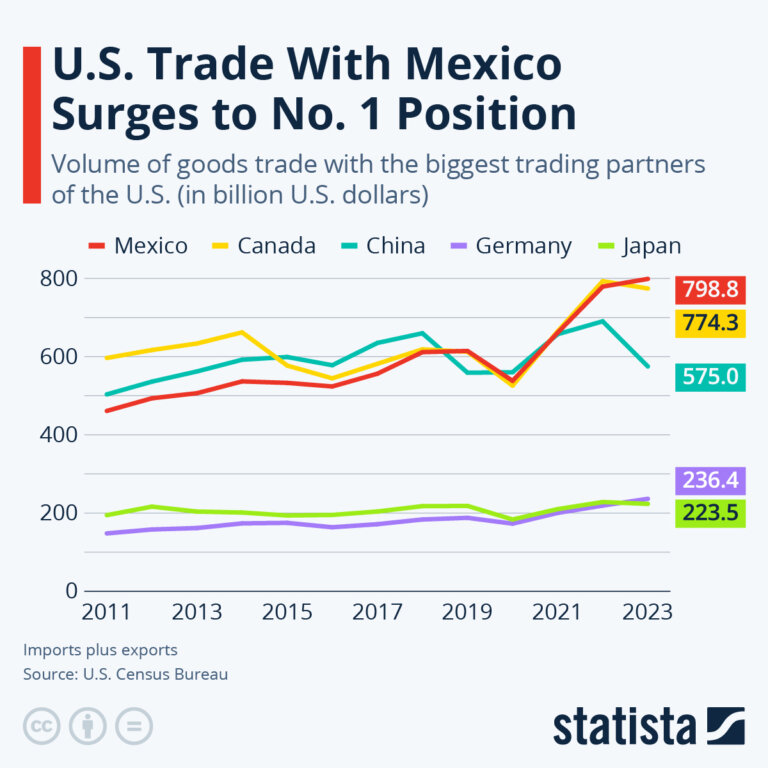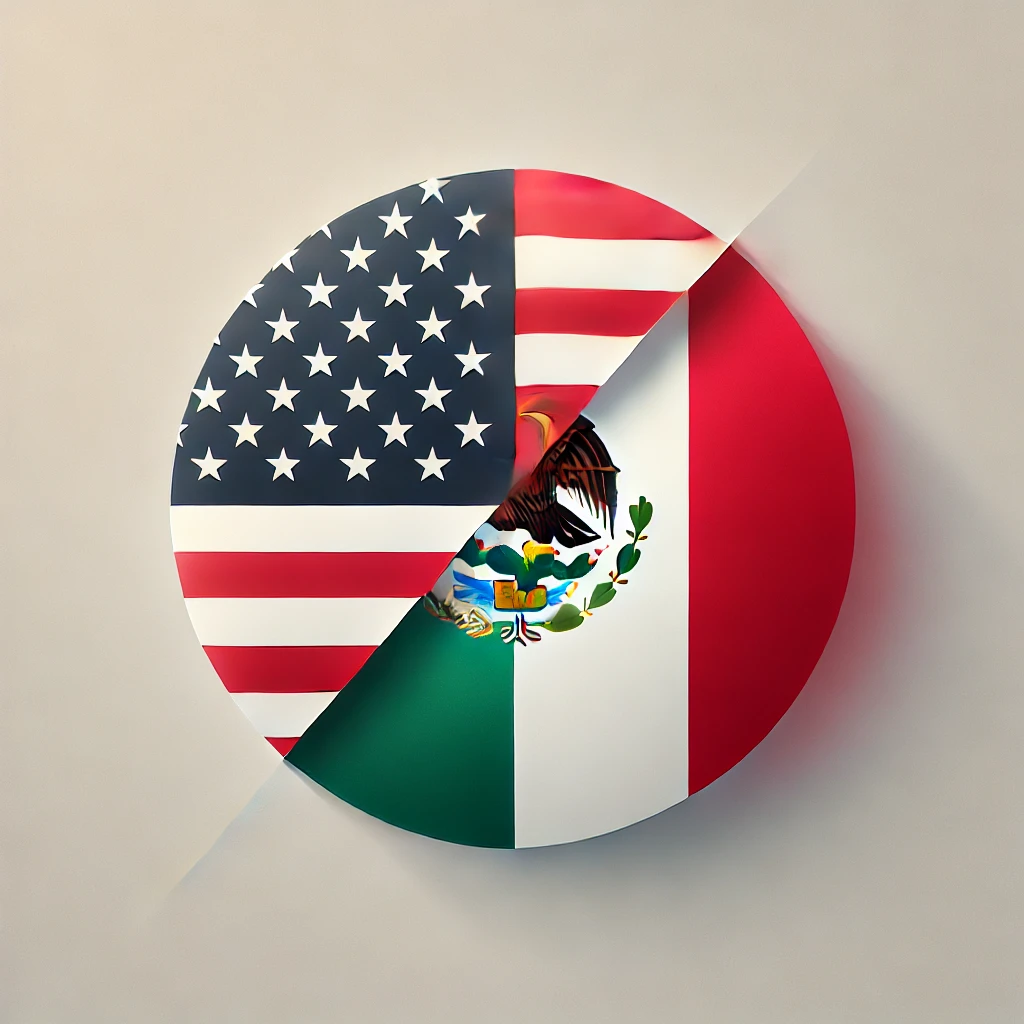The United States and Mexico share a vibrant and deeply interconnected economic relationship. Beyond the headlines and political discourse, Mexico has consistently proven to be a crucial and resilient trading partner for the US. This partnership, built on decades of collaboration and evolving agreements, has generated significant benefits for both nations. Let’s delve into the history and explore why Mexico remains a powerhouse in international trade.

Source: “Trade Flows Between the United States and Mexico: NAFTA and the Border Region” https://journals.openedition.org/articulo/2567
It’s clear that trade between the US and Mexico has been steadily increasing for decades. This growth was significantly accelerated by the North American Free Trade Agreement (NAFTA), implemented in 1994. NAFTA eliminated most tariffs between the US, Mexico, and Canada, leading to a surge in cross-border trade and investment.
While NAFTA had its detractors, it undeniably stimulated economic growth in all three countries. It led to the creation of millions of jobs, particularly in Mexico, and provided consumers with access to a wider range of goods at lower prices.
However, the global economy is constantly evolving. Recognizing the need to adapt to the 21st century, the United States, Mexico, and Canada renegotiated NAFTA, ultimately replacing it with the United States-Mexico-Canada Agreement (USMCA) in 2020.

Source: “Chart: U.S. Trade With Mexico Surges to No. 1 Position | Statista” https://www.statista.com/chart/20366/trade-volume-top-us-trade-partners/
The USMCA modernized the trade agreement, addressing critical issues like digital trade, intellectual property rights, and environmental protections. It also strengthened labor provisions, aiming to improve working conditions in Mexico. This updated agreement ensures that the US-Mexico trade relationship remains robust and relevant in a rapidly changing world.
A key factor in the success of this partnership is the innovative approach to manufacturing and production. The “twin plant” or “maquiladora” system, along with the IMMEX program, has facilitated cross-border production sharing. This allows companies to leverage the strengths of both countries – the US’s advanced technology and Mexico’s competitive labor costs.
Here are just a few examples of this dynamic collaboration in action:
- Automotive: Ford’s plant in Hermosillo, Mexico, produces over 400,000 vehicles per year, many of which are exported to the US. This highlights how major car manufacturers utilize twin plants to optimize their production processes.
- Electronics: Companies like Foxconn and Samsung have established significant manufacturing operations in Mexico under the IMMEX program. These facilities produce components and finished products for the US market, contributing to the growth of the electronics industry in both countries.
- Aerospace: Bombardier and other aerospace companies have facilities in Mexico that play a crucial role in the production of aircraft components.
The US and Mexico are demonstrating the power of adaptation and collaboration in the global marketplace. By proactively updating trade agreements like NAFTA and embracing innovative programs like IMMEX, they have not only strengthened their economic ties but also positioned themselves for continued success.
This partnership is a testament to the mutual benefits that can be achieved through open markets and strategic collaboration. As we move forward, it’s crucial to continue building on this foundation, exploring new opportunities, and ensuring that trade policies reflect the evolving needs of both nations.

